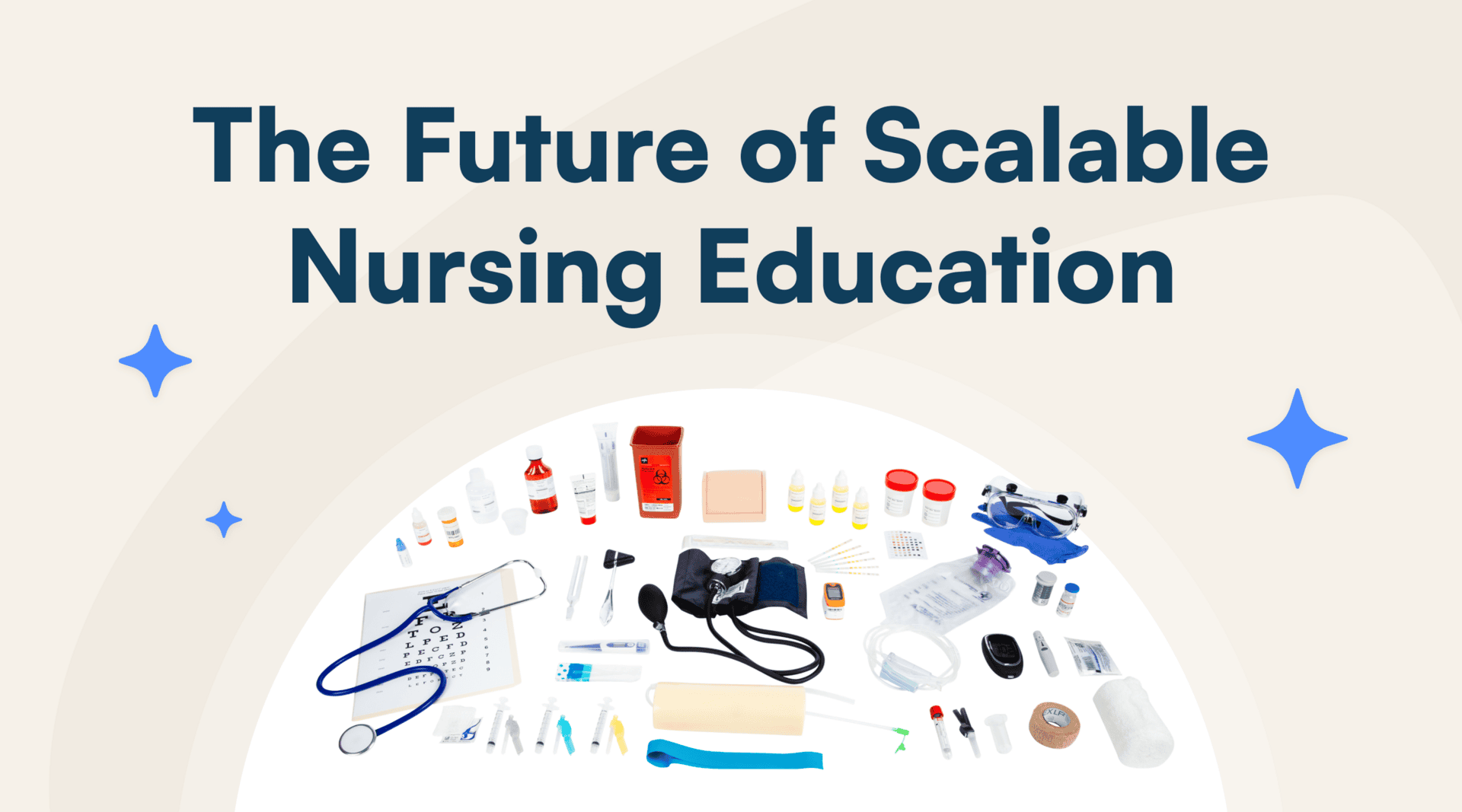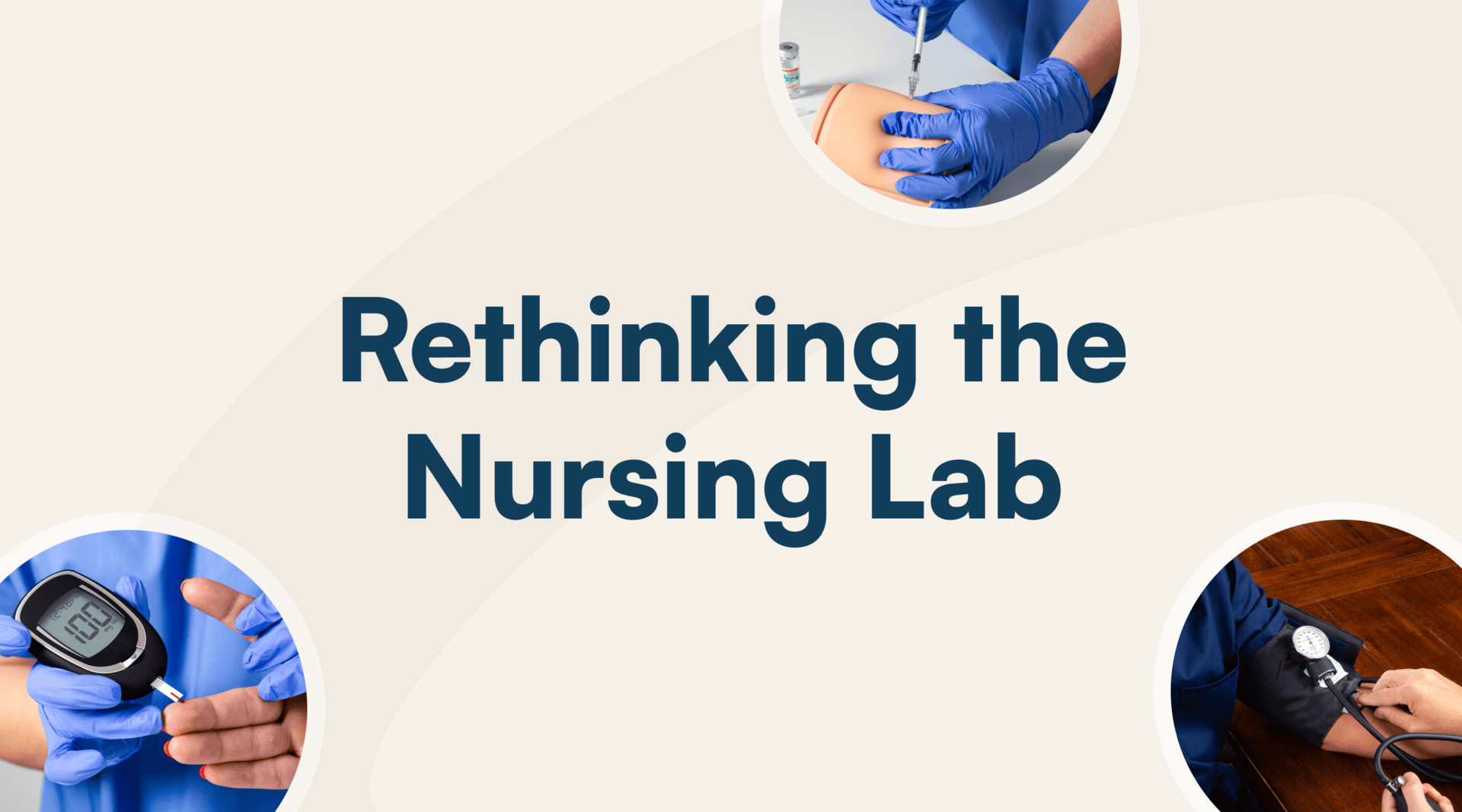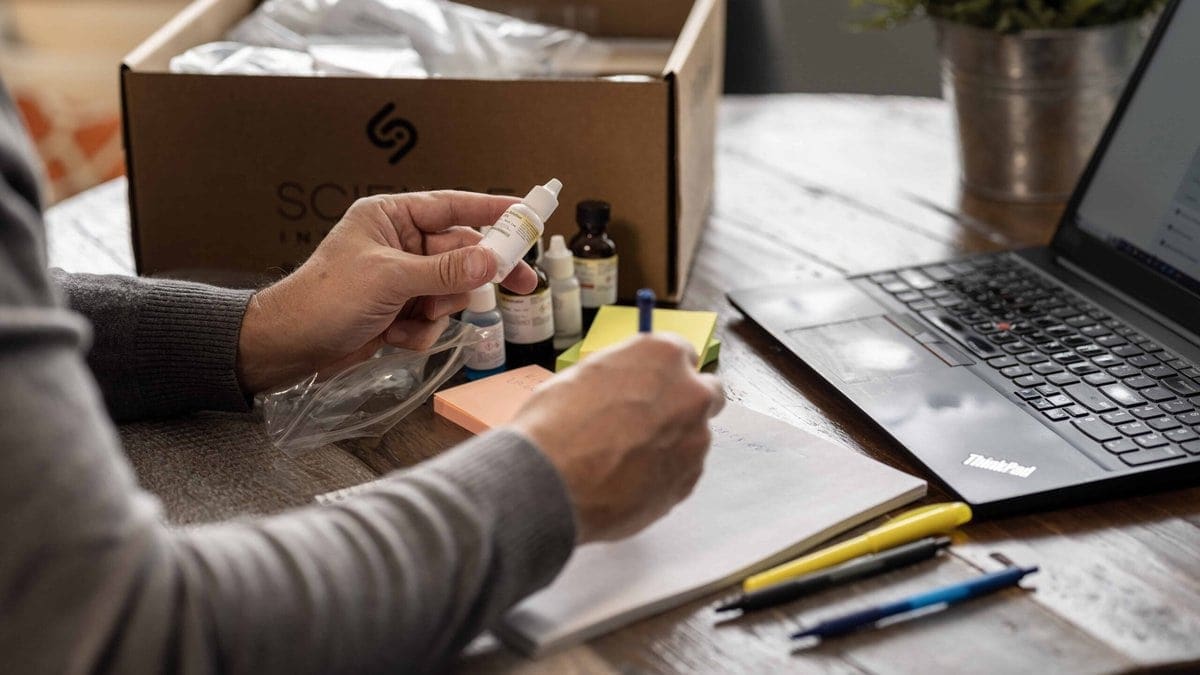A Q&A with Science Interactive’s Chemist, Ollie Yu, PhD
Experiments, lab partners, outcomes, safety…you name it, teaching a lab course online presents a host of unique challenges and complexities most other non-science disciplines don’t face. Add in the chemicals and open flames required for many labs, specifically in chemistry, and it’s no surprise that almost no science degree programs existed in a purely online format up to just a few years ago. Many instructors couldn’t imagine teaching science without the hands-on lab experience that they had in college, and doing so remotely seemed nearly impossible.
However, new technologies and a more complete understanding of outcomes-based teaching is allowing students to learn lab science in online format. This includes both virtual and hands-on lessons that closely mimic the experience and quality of on-campus labs—complete with the same level of attention and priority for student safety. But how? We asked one of our chief chemists on staff how they go about developing effective hands-on chemistry labs that prioritize lab safety without compromising quality.
Q: How much focus do you put on lab safety when you’re designing experiments?
Ollie: We know incorporating hands-on labs into online curriculum is hard, and you might hesitate because you can’t be onsite to provide the same kind of supervision as you would on campus. That’s why our lab development and testing process is so rigorous. It’s built around the idea that you can’t be right next to your students when they perform experiments. So when our scientists design labs, we keep these 5 principle areas in mind:
- Training: Providing mandatory student safety training before accessing course content
- Preparation: In-depth instruction for students about preparing their home lab area and recommendations for adjusting experiments based on materials and space.
- Guidance: Giving clear, thorough, accessible safety guidance for each experiment
- Equipment: Providing PPE and instructions for handling and cleaning all lab equipment
- Microscaling: Using microscale quantities of chemicals to enhance safety
Q: How will students know what to wear for safety/PPE?
Ollie: Our prerequisite lesson walks students through detailed information about what clothing students must wear for safety in their home laboratory setting, exactly the same as what students would learn in the first laboratory session of an in-person experience. Each lesson includes clear instructions, reminding students to put on their provided laboratory-grade safety goggles, gloves, and any PPE we’ve provided while performing the lesson.
Q: How hazardous are the chemicals students deal with?
Ollie: Mostly non-hazardous. In fact, many topics that traditionally contain hazardous chemicals have been reimagined in green, student-friendly ways. And the few topics that don’t have any convincingly low-hazard but quality alternatives are converted to digital labs that still allow students to observe the concept without undue exposure to hazards.
| How it Works Many variations of the classic Test Tube Mystery laboratory, during which students learn to identify unknown chemicals, contain hazardous chemicals like lead or sulfuric acid. While we have a hands-on lesson available with safety measures that we deem acceptable in place, many instructors prefer to negate these issues entirely by using our Digital Qualitative Analysis lesson, which allows students to explore the identification of lead or even more dangerous chemicals like mercury without any safety issues. |
Q: What about chemicals getting in students’ eyes, mouths, or on surfaces in the home?
Ollie: While the vast majority of our chemicals are non-hazardous, we treat all chemicals as being potentially hazardous, the same as you would in an in-person lab. From the outset, our lessons are designed to use very small quantities of each chemical to decrease any hazards that exist in the first place. From there, our mandatory lab safety prerequisite lesson addresses concerns about chemical exposure in great detail, including:
(1) having students identify the household substitution for an in-person laboratory’s safety measure (ie: a household shower for a laboratory showerhead);
(2) helping students identify and record an ideal location in their home to conduct their experiments by ensuring they have the proper working surface with the correct safety measures in place;
(3) helping students develop a plan for any hazards that do exist in their environment and thinking through in advance how to mitigate them;
(4) careful instruction on how to respond in case of accidental chemical exposure;
(5) practical guidance to using SDS sheets for safety and understanding.
We even have a safety agreement and contract as would be normally employed in an in-person laboratory setting!
| How it Works Rather than running reactions at a normal scale, the majority of the chemicals we provide in our chemistry kits are in quantities of less than 5 milliliters! |
Q: What about emergencies?
Ollie: Because our chemistry lessons are crafted to control for hazards, there are very few emergencies that would be possible outside of the normal human experience in the first place. (For example, we use flames as needed in lessons–a common hazard present in day-to-day life.) That said, our mandatory lab safety lesson goes through all types of emergencies in great detail, both to make students aware of possible hazards as well as to teach them how to handle any potential emergencies.
Q: How would students dispose of chemicals?
Ollie: The vast majority of chemicals we provide are environmentally friendly, nontoxic, and able to be disposed of down the sink using water, in the household trash, or allowed to evaporate from an open container outside. Instructions are provided for any special disposal needs.
Q: What safety precautions are needed for using the thermometers provided?
Ollie: We only use modern spirit thermometers (non-mercury), which are both non-toxic and environmentally friendly. Breakage requires no special handling aside from care around cleaning up broken glass; any liquid from a thermometer break can simply be wiped off the surface and cleaned with soap and water.
Q: What safety precautions are present for lessons that require a heat source?
Ollie: In addition to showing students how to properly prepare their environment and working surfaces when using flames, the burner we use does not get hot while in use so it is easy to handle; it has a wide base to avoid the tip hazards associated with Bunsen burners; it has a wick, making it much easier and safer to both light and extinguish than typical Sterno cans. Each time a student uses a heat source in our lessons, we carefully walk them through setting up the burner, techniques for using and extinguishing it, and caution them against what items may be hot after use.
| How it Works Our burner setup is assembled in its fireproof pan along with any beakers, test tubes, or other containers to be heated, before the burner wick is lit. After heating, the burner is easily extinguished with a lid. The whole setup is then left undisturbed until it has cooled. |
Q: What about liability?
Ollie: We carry liability for our lessons so our schools don’t have to. We stand by the rigorous safety standards we have in place, the quality of our chemicals and materials, and the descriptive, thoughtful, carefully designed processes we walk students through in our lessons. With over a decade of experience under our belts, we have instituted plenty of safety measures to ensure students know how to stay safe during at-home experiments.
Lab Safety for Hands-On Science at Home
At the end of the day, while much can be done in our digital online world, there will always be some limitations. Online science is no longer one of them. Hands-on components to online science lab courses have become essential, which is why a core tenant of developing our hands-on labs is ensuring student safety. From carefully controlled amounts of materials to mandatory lab safety training, our labs are meant to replicate the rigorous safety requirements of on-campus labs for online students. At the same time, students have the opportunity to feel the viscosity of different solutions, examine the crystal structure of a granite sample, or observe the crystallization of supercooled sodium acetate—experiences they might not otherwise have.
So if you’re teaching science labs online, and want to be sure safety remains a top priority while still providing students with hands-on, real-world lab experience, we can help.
Discover more articles

Science Interactive Launches New Nursing Fundamentals

What Clinical-Ready Actually Looks Like (And How to Get There Sooner)


